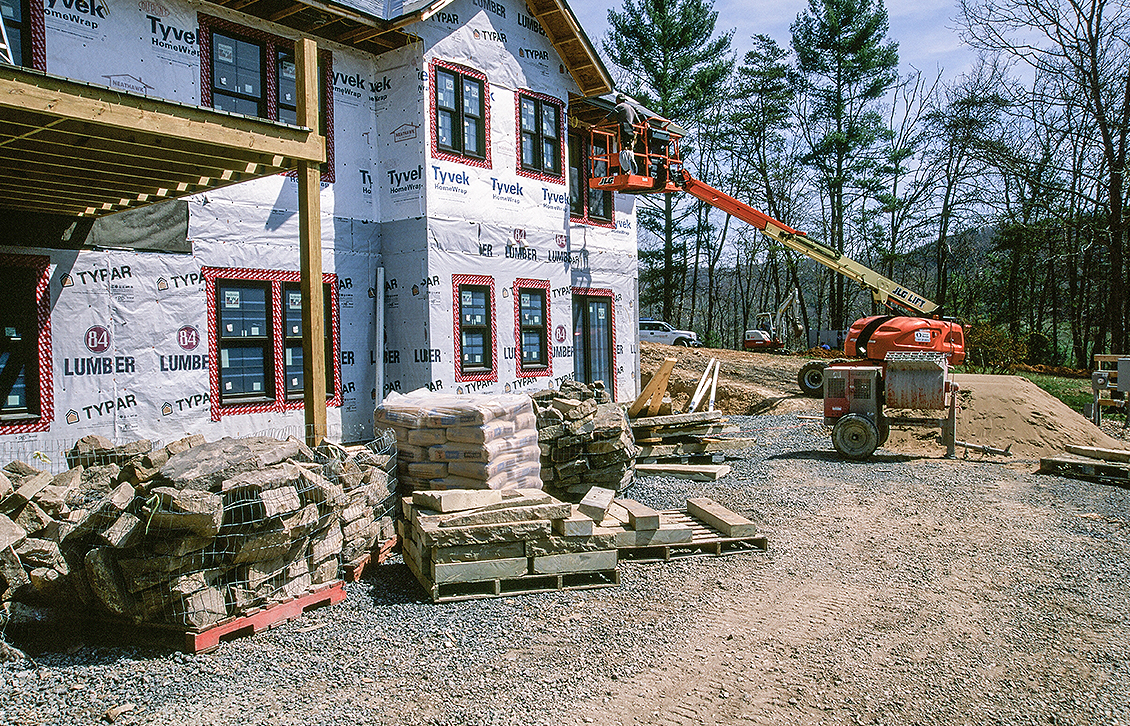Farm & Home
Aggregate
Most farm and homeowner customers will be ordering aggregate from RBS Inc. in smaller quantities, typically one or two trucks at a time. Normally, heavy equipment is not on site, and the load may be tailgated onto the road or driveway. Our trucks normally deliver between 21 and 23 tons, and it is by far most economical to order in that quantity. Even if you don’t need that much now, it keeps very well.
As a customer, you must understand that our trucks are very heavy, in the 80,000 lb range, and that you are responsible for recovering them if they become stuck on your property. It is important that the ground be solid, dry, or frozen. You must point out obstacles like septic tanks, water lines, drainage pipes, low hanging wires and other hazards. It is common to need tow wreckers to get a loaded truck unstuck, and it is very expensive! Your yard can also end up looking terrible ! Make sure it is dry.
Most of the time, you will want 1-1/2 inch Crusher Run or 3/4 inch Crusher Run for your driveway or road. This material spreads well, and packs down like concrete. The 3/4” is a little easier to work with smaller tools or equipment.
If you are in the mud, you want #2, #3 or #4 stone. They are about the same, and if you have no idea, get the #4s. This will get you out of the mud, but is a little rough to ride on. You may want to use some 1-1/2 inch Crusher Run on top.
If the stone seems to just disappear in the mud, you may want to try some geotextile.
Here are some commonly mis-used terms, their correct uses:
Crushy Run, Crush and Run, Crushin Run = Crusher Run
Has fines and a top size of 1-1/2” or 3/4” and packs like pavemennt
Cinders are from a power plant, not found in a Quarry
Shot Rock is any and all size of stone, and has only been blasted.
Blasty Rock = Don't know what this is!
Estimating the amount of stone you need is really just a good guess. Since there are no forms, and the product is relatively inexpensive, there is no economy to final estimates being any more precise than truckloads.
First, calculate the volume of aggregate you need. For a road, that is the length x width x depth. Length is your choice, width is kind of set at 9 feet if we are tailgating, and depth is usually 4 to 10 inches. The larger the aggregate, the greater the minimum thickness is going to be. You really can not have a 4 inch thick road of #2s. So, calculate the volume in cubic feet: 5280’ x 9’ x 0.5’ = 23760 cf.
Most aggregate designated with a single number, like #4s, weighs around 90 to 100 pounds per cubic foot. #57s, designated by 2 numbers weigh a little more at 100 to 110 pcf. So, if we are using #4s, 23760 cf x 95 pcf = 2257200 lbs. =1128 tons (divide by 2000 lbs. per ton).
Our project will require 1128 tons. Truck loads are around 22 tons, so a good guess for an initial order would be 50 truck loads.
If you want crusher run on the same job, it runs 130 to 145 pcf compacted. If you are not using rollers to compact it, I’d start with 126 pcf or 1.7 tons per cy in place. We’d need about 1500 tons, 68 truck loads of crusher run, for the same job.
Concrete
Non-professional users of concrete need to know a few things about concrete before the choose to work with our product.
Fresh, Unhardened concrete in very alkaline, and can cause severe alkali burns to your skin and eyes. The bleed water is particularly alkali, and you need to change any clothes that get soaked with this water quickly. Wash exposed skin with soap and water.
Our trucks and drivers deliver the concrete, and while the are very helpful, it is completely your responsibility to get the concrete in the forms, spread and worked down. You need to have the proper equipment and people on hand to get the job done. If your job requires a 2 inch slump and you need every section of chute, you are going to need some men to rake the mix down the chute. We are happy to help, but we are not the contractor.
When you order concrete, err on the side of ordering too much. Most people make the biggest mistake measuring the depth of their forms. Measure at more than one place, and measure out in the middle of the pour. If you are pouring on #57 crushed stone, add 1/2 “ of depth. The greater the area of your pour, the more critical an accurate depth becomes. Just a 1/4” depth error on a 25’x50’ pour is a 1cy shortage.
Broom finished concrete is a lot easier to succeed with than smoothly finished concrete, so try that first. Use retarder and give yourself some extra time, too.
Concrete will always crack, and most wire mesh never gets placed in the right place. Use fibers.
Perhaps you have heard of flyash, a material used in concrete as a substitute for cement. Flyash enhances the finishibility of the mix and decreases permeability. Flyash comes from coal fired electric power plants, and while its use in concrete is desirable, it can cause production problems particularly with maintaining consistent air content.
We can also add color to concrete, some are economical, some are quite expensive.
